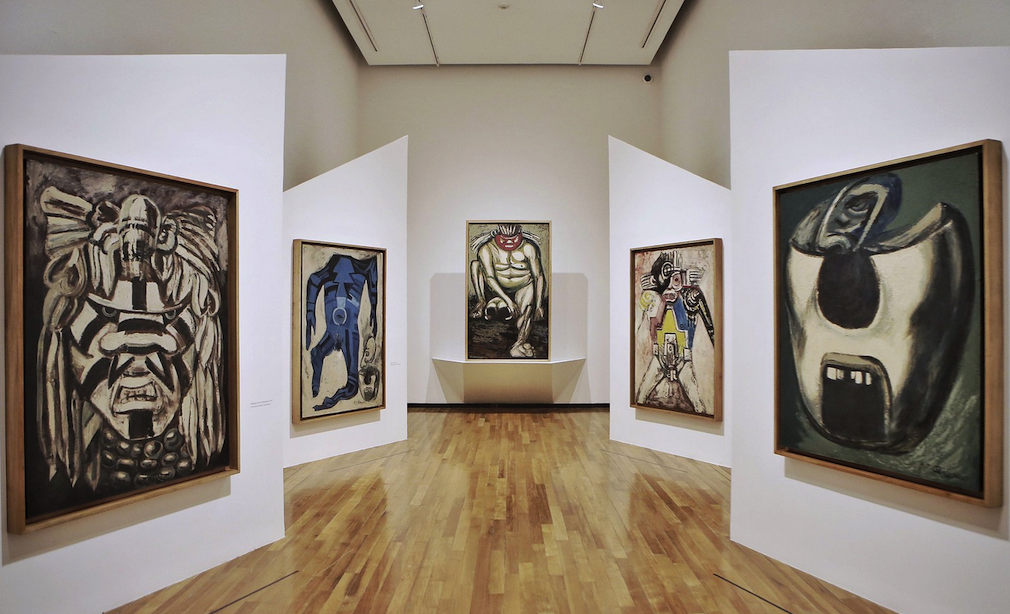

Victor Palacios, curator
In 1947 José Clemente Orozco (1883-1949) produced one of the most significant graphic and pictorial projects of his vast artistic career entitled Los Teules*. This series, especially conceived for his fifth exhibition at the Colegio Nacional, consisted of 66 works produced in various formats and techniques such as charcoal drawing, ink, tempera and pyroxylin. In Los Teules Orozco resumes with impetus one of the core themes of his artistic production and of his unique way of confronting history through art: The Conquest of Mexico. This time, he engages in a direct dialogue with the acute narrative that Bernal Díaz del Castillo weaves in his famous manuscript Historia verdadera de la conquista de la Nueva España [True History of the Conquest of New Spain], completed in 1568.
The five large-scale pyroxylin pieces that make up this exhibition are part of Orozco’s artistic collection housed at the Museo Cabañas since its founding. These monumental pieces within the Los Teules group stand out for focusing the composition on a single, forceful figure. In the absence of descriptive elements unrelated to the character represented and the lack of narrative scenes alluding directly to the conflict, the viewer of these works is fully confronted with the enigma captured by Orozco. It is an enigma that not only reaffirms the artist’s constant desire to demystify history, but also his firm intention to provoke complex emotional, sensorial and aesthetic experiences in the face of the painting itself. It is presented without further explanation, even in the case of so-called historical painting.
As has been pointed out by several art historians, in the works shown here there is a prevailing space or passage that refers to a trance state after the harshness of the battle. However, it is also possible to imagine that some pieces point to a sort of foreboding condition in the face of the imminent clash of cultures and the consequent debacle. In view of this indefinite temporality and with respect to Los Teules, the researcher Itzel A. Rodríguez Mortellaro remarks that, “The idea of history in Orozco’s work is defined by an understanding of past events in intimate interpenetration with the present, as well as by the certainty that the relevance of local events lies in their universal dimensión.”
From a technical and formal approach, these works offer an incomparable example of how Orozco incorporated pyroxylin (nitrocellulose) into his pictorial production beginning in 1944. As did other contemporary painters, particularly David Alfaro Siqueiros, the artist from Jalisco decided to experiment with the virtues and possibilities of this synthetic substance originally used for industrial purposes. Broadly speaking, it allowed Orozco to produce dynamic strokes of greater material density thanks to the rapid drying of pyroxylin and its efficient fixation to an organic support such as masonite. Undoubtedly, the use of nitrocellulose was a determining factor in the artist’s last productive stage, resulting in a technique that led him to catalyze his concerns and links with various distinctly modern languages at the international level.
Finally, it is worth noting that this exhibition is the first in a series of exhibitions aimed at showing Orozco’s works on a permanent basis and in dialogue with his imposing series of murals in the Main Chapel of this museum.
* The word teul has its origin in the Nahuatl teotll or teutl meaning God; Teul is the plural form. In the work cited above by Bernal Díaz del Castillo there is another meaning of the term: demons or evil gods. Hence, its relationship with the Conquistadors.